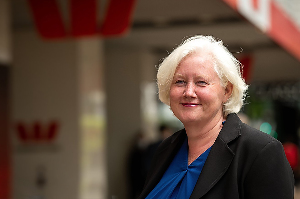
The country experienced extreme price growth over the pandemic, which helped drive home valuations to absurd levels based on price-to-rent and price-to-income ratios.
Bloomberg has spelt out the impacts of a severe house price correction:
“Falling house prices will erode household wealth, dent consumer confidence and potentially curb future development.
“Animal spirits are typically tames when people are faced with higher repayment costs on an asset that is losing value.
“There are going to be house buyers who have entered he market in the past year or so who started off with a mortgage rate of 2.5% and all of a sudden they are rolling off on to a mortgage rate closer to 6%. There is going to be some pain for sure.”
The country’s median dwelling price has already plunged 9.2% from the November 2021 peak with the stock of unsold homes also ballooning.
Deeper crash possible
Even ANZ is backing Bloomberg’s claim to some extent and has raised the risk of a deeper housing market crash, with both prices and construction at risk of heavy falls.
In its latest Property Focus, ANZ says there has been six months of moderate falls – not a crash by any means – but a reflection of the cooler fundamentals in the market.
The available stock of real estate listings is now up 84% on last May’s lows. That’s not coming from a surge in new listings, rather sales volumes falling away and auction clearance rates plummeting. Houses are simply remaining on the market for much longer than during the red-hot 2021 boom.
ANZ chief economist Sharon Zollner says while the bank continues to forecast what it would call a soft landing for house prices – falling 11% this year – risks of a larger fall are there.
Mortgage rates
In particular, sharp increases in global interest rate expectations have flowed through into still-higher mortgage rates – and while getting on top of CPI inflation with higher policy rates is the optimal thing to do from a sustainable economy perspective, house prices are likely to face larger near term declines if upside interest rate risks continue to materialise.
Mortgage rates have risen sharply over the past month. This has taken the average one-year special rate offered by the major banks up to 5.35%, and the average five-year rate up to just below 7%.
“Mortgage rates around these levels were commonplace in the decade before COVID, and aren’t particularly high in a historic comparison, but the pace of increases is unprecedented,” says Zollner.
“The term structure of the mortgage curve remains steeply upward-sloping, making fixing for longer expensive. That’s not new, but we are now at a point where break-evens are so high that one has to expect significant further rises in interest in order for fixing for two years or more to be worthwhile. That could happen, but financial markets are already factoring in big increases, and the hurdle for a nasty surprise is now pretty high,” she says.
Zollner says it’s also worth noting that according to RBNZ data, almost 60% of outstanding mortgage borrowing is fixed for less than a year.
“Households who may have taken advantage of the record-low interest rates last year will find it challenging to maintain the same level of discretionary spend when facing mortgage rates that could be more than double their previous fix.
“We think they’ll manage, and that should provide a floor under how far house prices will fall. But it will be at the expense of household consumption spending (i.e. GDP growth). That’s a feature, not a bug, of tightening monetary policy.”




